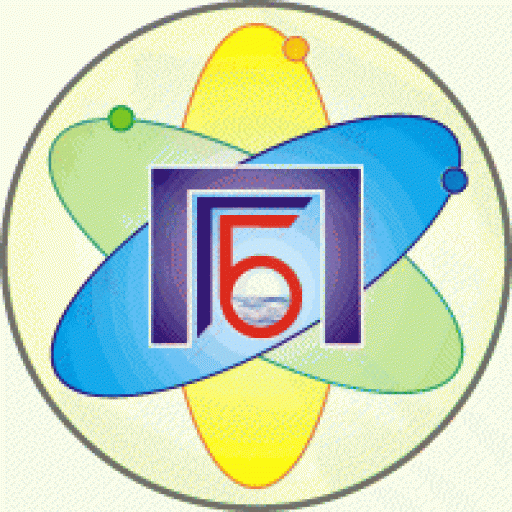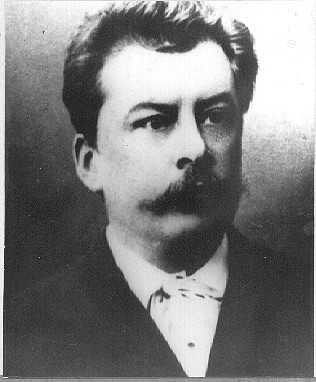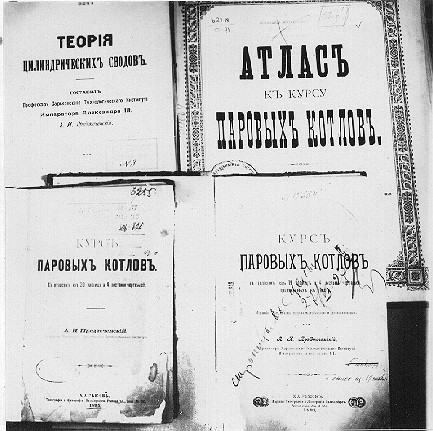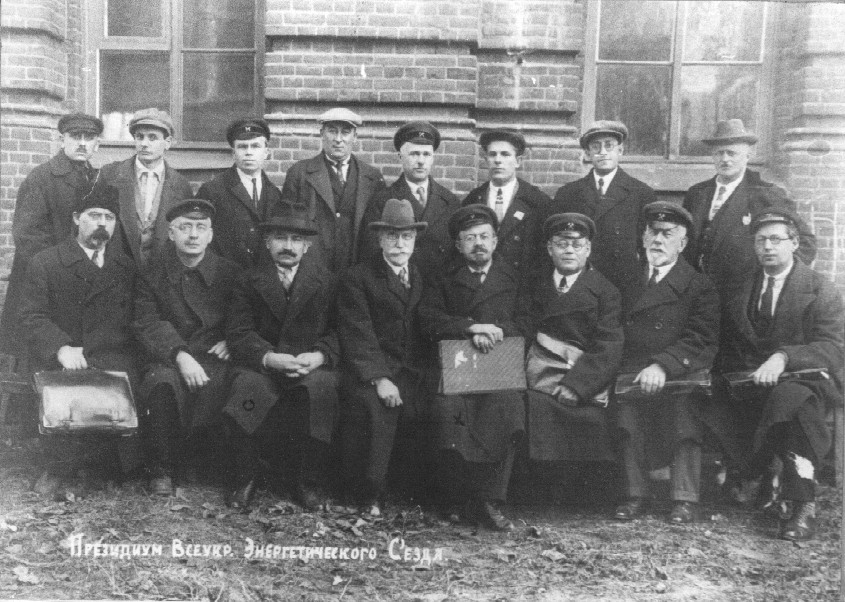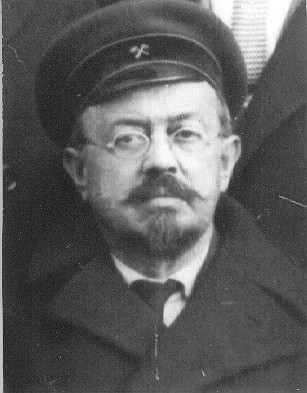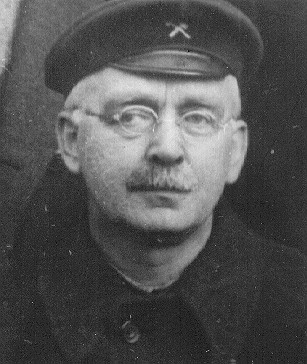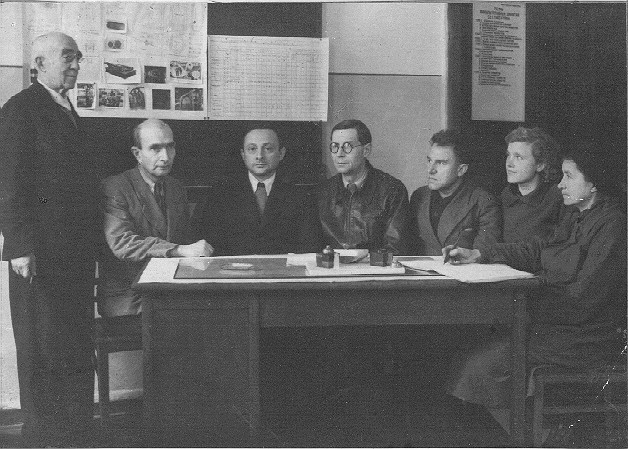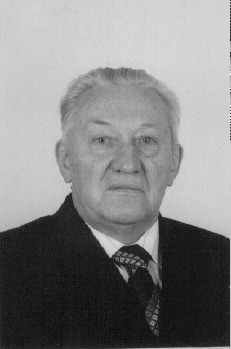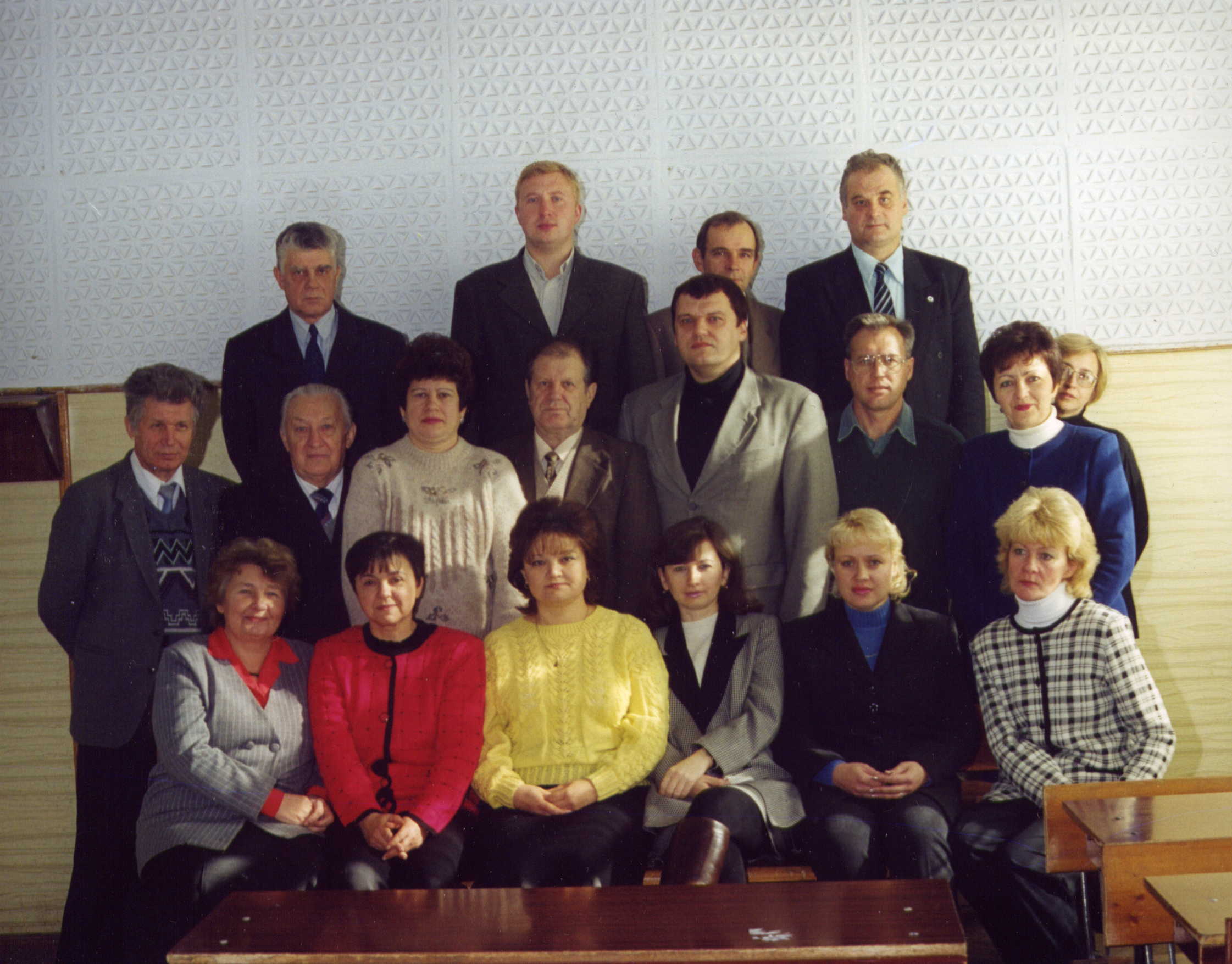History of the steam generator building sub-department inseparable from the history of the University.
September 15 (September 27 New Style), 1885 at 13 pm in the auditorium of the main body of auditorium was inaugurated practical Kharkov Technological Institute. Emperor Alexander III. The meeting was attended by representatives of government agencies and community organizations, professor of Kharkov University and the newly established institute, teachers and students. Classes start was scheduled for 9 am on Monday, 16th (28th) of September.
At the grand opening of its first director of the Institute Professor Kirpichev Victor L. said: “Kharkov Institute of Technology will have a long time to grow and develop, and his life will not be considered for decades and centuries, while the number of outstanding engineers – tens or hundreds of thousands.”
Choosing to open a practical Kharkov Institute of Technology, whose purpose was to train engineers for developing industries of southern Russia – Donetsk and Krivoy Rog basin, many of machine-building, mining, metallurgy, food and light industry, due to the fact that Kharkiv developed as industrial and commercial center.
Originally institute had 5 buildings: the Main (Classroom) building, the Physical building, the Chemical Engineering building, the Workshops and the residential building for the faculty. However, by the 25 th Anniversary of the Institute (in 1910) the number of buildings has doubled. Were built the Engineer building, the Technical building and the “New building”.
At the opening of yearly intake at the institute was determined in 125 people (in 1885. Admitted 120 people.). However, already in 1897, the reception has been increased up to 250 people., And in 1903. – up to 300 people. Approved by the Ministry of “set” students of the 1st semester of 300 people, instead of the previous 250, was based on “available at the institute rooms for drawing and practical exercises.”
In 1895, the total number of teachers was 44 people, including professors – 11, associate – professors – 6, teachers – 27. In addition, there were 14 laboratory assistants and a catechist. By 1905, the number of teachers increased to 67 people.
Training program was designed for training period of 5 years (10 semesters). However, the existence of so-called objective system (examinations in the subjects in any semester unlimited number of times) allowed as to reduce the period of training, and to increase it (the maximum stay at the institute was set 8 years).
The Institute has two branches – mechanical and chemical. A special departments were not. Training of engineers was carried in the field of wide profile. For example, a mechanical department had the specialty of applied mechanics and the theory of the construction of machines, which were taught such articles of heating profile, such as boilers, steam engines, steam turbines, internal combustion engines.
Thus, Heat Engineering specialty, including steam boilers and steam engines, one of the oldest professions Institute.
First course of boilers began to taught at the institute in 1888. professor Alexei Ivanovich Predtechensky.
Predtechensky A.I. (1857-1905). He graduated in 1879 of St.Petersburg Institute of Technology. Was a teacher a vocational school, later was in the army. In HTI joined in 1886 as a lecturer (associate – professor) technical drawing. Some time was the second director, and in 1902 – director of the Institute. Since 1888 taught the theory and structure of boilers. He wrote a number of textbooks and manuals on steam boilers, which played a large role in the training of specialists in the field of boiler.
He wrote:
- The short course of boilers with the atlas (published in 1889).
- The course steam boilers with the atlases (1895 and 1899).
- The theory of the cylindrical vessels (1901)
- Design of stationary steam boilers Russian production (1903)
It is interesting the course steam boilers, which consisted of the following sections (1900 – 1905 years):
- 1. Introduction (historical review).
- 2. Design of steam boilers.
- 3. Heating boilers (boiler furnaces).
- 4. Determination of the furnace.
- 5. Actually steam boilers (materials, test conditions which they must satisfy).
- 6. Determination of solid sizes of boilers.
- 7. The general theory of steam boilers.
- 8. Devices for superheated steam.
- 9. Water heaters.
- 10.Studies efficiency of the steam boilers.
- 11. About the explosions of steam boilers.
- 12. On the steam lines.
- 13. Chimneys.
- 14. Chimneys tube.
- 15. Fittings of boilers.
Laboratory facilities for the course of steam boilers used existing power station at the institute where the was installed Fitzner-Gamper boiler, equipped with grate and the fan blowing superheated P = 8 kgf/cm2, tpp = 250 °C, tw = 50 °C . In addition there was a small locomobile boiler. The steam was fed to a horizontal steam engine output of 35 hp, and later was installed vertical steam engine with 120 hp, which allowed to electrify the 1907 Institute.
Practical exercises for students to test the boilers were introduced in 1894. They have adapted to the “needs of the workshops in the driving force.” For this reason, practical exercises to test the steam boilers and engines “for a long time left something to be very much, because the boiler room and the machines were too tight, and the number of engines is limited. The organization also runs a scientific nature met with some serious difficulties. ”
The petition was filed on the “arrangement at the Institute for laboratory testing of boilers and engines, independent of the existing mechanical workshops at power plant.” However, “the enormity of the required funds, about 100 thousand rubles, forced the Training Committee to abstain from the decision of this case in a positive way.”
In 1899 the director of the Institute D. S. Zhernov was filed application for the building of new rooms for the steam boilers, but at the time this idea was not implemented. Existing power machines designed for lighting. Were originally covered only drawing rooms IV and V courses in the new (drawing) building. “But the comfortable of electric lighting created such demand for electricity”, it was decided, as stated above, set the vertical steam engine of 120 hp, and to “enhance the boiler to it was fastened superheater.” Later in the same room was installed diesel with 120 hp, which allowed the Institute to electrify.
Need industry urgently required to expand the training of experts, ie the transition to polytechnic education.
September 15, 1910 at the anniversary meeting dedicated to the 25th anniversary of the Institute, the Director of the Institute Professor L.M.Muhachev said: “In a series of meetings of the Scientific Committee expressed positively in the sense that the existing two offices, mechanical and chemical, you must attach an engineering department, mining and electrical and that the Polytechnic, combining scientific forces on all major branches of engineering, is an institution of special power and significance. “And further: “The force of circumstances Institute has reached a state in which the specialization of knowledge and the formation of several departments seem almost inevitable … The final transition to a polytechnic type not only in substance but in form, under these conditions is no more than a matter of time. ”
After the October Revolution and the Civil War, life gradually returned to normal at the institute, in 1920, the number of faculty at the institute has been increased to five. In addition to the available, Mechanical and Chemical faculties were opened the Electrical Engineering Faculty and the Faculty of Agriculture.
Because ratification electrification plan in 1920 was a big welcome students – about 100 people.
In the same year in the mechanical department was formed sub-department of Thermal Engineering, in the amount of tasks which has been included training of heating profile, including steam boilers, as well as the leadership course and diploma projects.
Presidium of the All-Ukrainian Congress of Energy. April 1924
The first chief of the sub-department of Thermal Engineering, in the period from 1920 to 1930 he was professor George F. Burakov. He also provided, along with professors P. M. Muhachev and S. N. Semihvatov, train engineers on steam boilers course.
Burakov G.F. (1868 – 1931 years). He graduated from the Kharkov Institute of Technology in 1892, the mechanical department. He was a teacher of the Kursk vocational school, worked as a factory inspector in Kherson province, later in Kharkov province. Course of steam boilers in the HTI started teach (concurrently) from 1901. In the 1903 he went to work at HTI as a teacher. In 1908 he was appointed professor of the applied mechanics and the theory of building machines.
G.F.Burakov was widely known as a specialist in the construction and operation of steam boilers and auxiliary equipment. He was associated with many industries and factories, manufacturing steam boilers (Nikolaev, Lugansk, etc.). He was chairman of the South – Russian society of boilers safety.
G.F.Burakov was known as a teacher. He wrote a series of textbooks, including “The course of steam boilers with the atlases” (1924).
G.F.Burakov founded in Kharkov private real school and at 1912 he was the it director (now in this building on the square of Rudnev placed the Institute of Agricultural Mechanization).
In 1923 the Kharkiv Institute of Technology was named V.I. Lenin.
In 1929 the Kharkiv Institute of Technology named V.I.Lenin was renamed the Kharkiv Polytechnic Institute named V.I. Lenin (KhPI).
In 1930 for targeted specialized training KhPI has been divided into five separate institutions that arose out of its individual departments:
- 1. Kharkov Institute of Mechanical Engineering.
- 2. Kharkov Institute of Electrical Engineering.
- 3. Kharkov Institute of Chemical Technology.
- 4. Kharkov Institute of Civil Engineering.
- 5. Kharkov Aviation Institute.
Sub-department of Thermal Engineering joined the Kharkov Institute of Mechanical Engineering.
Also in 1930 from the sub-department of Thermal Engineering stood out as independent sub-departments of steam turbines, internal combustion engines and steam locomotive.
Preparing steam boilers engineers continued to be the sub-department of Thermal Engineering, which from that time was called “The sub-department of boilers and heating.”
After 1920 active participation in the training of engineers, as well as the organization of scientific research takes professor Sergei A. Martynov.
Sergey A. Martynov (1875 – 1933). He graduated from the Kharkov Institute of Technology in 1907 by mechanical department. He worked as a mechanic at the Dietmar plant in Kharkiv, and from 1911 to 1920 in the South – Russian society of boilers safety (with 1916 – its manager). On the basis of this society in 1920 was organized by the Bureau of Thermo-Scientific and Technical Department of the Supreme Economic Council of the USSR, the head of which was S. A. Martynov.
During these years, he is involved in the KhTI for teaching courses in heat engineering. At the beginning of teaching S. A. Martynov organizes KhTI the Thermal section, on the basis of which the number of actively working students completed heat-office staff, which in 1929 was reorganized s Ukrainian Scientific-Research Institute of Industrial Energy. Director of the Institute in 1929-30 yy was S. A. Martynov.
In 1930 the sub-department of steam boilers and heating was enrolled as a lecturer part-graduate KhTI Oscar M. Rabinovich, who played a major role in the formation and development of the steam generator building sub-department and training of engineers for developing industries engineering.
In 1938 from the sub-department of “steam boilers and heating technology” stands out as an independent structural unit “boiler building” sub-department. Head of the new sub-department is appointed associate professor Gabriel V. Bukhantsev.
Bukhantsev G.V. was born in 1902, graduated from the Kharkov Institute of Mines. In 1927 graduate studies at the steam boilers and heating sub-department of KhTI, after which he worked at the sub-department until 1950 (with a break during World War II). Headed the sub-department from 1938 to 1941, in the postwar years was a lecturer. Bukhantsev G.V. was a well-known expert in the field of power and encyclopedic man.
In late 1941 the sub-department of Boiler was evacuated to Krasnoufimsk Sverdlovsk region. Temporarily it was reunited with the sub-department of Thermal Engineering. Headed to 1949 of a joint chair associate professor David G. Faershteyn.
Faershteyn D. G. (1901 – 1984). He graduated from the KhTI in 1925. Then worked in the Heat Engineering Bureau, and then at the Institute Promteploenergetiki. In 1936 he entered the steam boilers and common heating engineering sub-department of Kharkov Institute of Mechanical Engineering. During these years, he has led research projects associated with the burning of Ukrainian low-grade brown coal, which resulted in his Ph.D. thesis.
1947 The teachers and staff of the Boiler Building sub-department. From left to right: Lototsky E.I., Bukhantsev G.V., Faershteyn D.G., Galin V.L., Gorbatko P.A., Goltyhina A.P., Tkachev A.M.
During World War II in Krasnoufimsk and in the early postwar years (1941 to 1949), acting head of the Boiler Building sub-department, then until his retirement in 1976, worked as a lecturer, not breaking communication with the sub-department.
In March 1944 the Institute returned to Kharkov from the evacuation. In 1950 was reorganization and consolidation the Institute. By combining the four institutions (Kharkov Institute of Mechanical Engineering, Kharkov Institute of Electrical Engineering, Kharkov Institute of Chemical Technology and Institute of Cement Industry) restored the Kharkov Polytechnic Institute named Lenin (KhPI).
Also in 1950 restored a special Boiler Building sub-department. The head of this department is back from Moscow Professor Rabinovitch Oscar Markovic. In this position he worked until 1972.
Galin Vladimir Lvovich. (1900 – 1971). In 1924, he graduated from KhTI and went to work in the design institute of the trust Donbass Energomontazh (in the post-war period Energomontazhproekt). Soon became the head of this Institute. High qualification, lecturer skills and a love of teaching work brought him in 1937 to work at the sub-department as an assistant professor in combination, and in 1965 it was completely converted to work in the sub-department.
Anna Mikhaylovna Tkacheva graduated from the Odessa Polytechnic Institute in 1926. She worked at the Research Institute Promteploenergetiki, and since 1936 – at the steam boilers and heating equipment sub-department. Since 1952 Ph.D., associate professor. Anna Tkacheva differed exceptional work ethic and integrity. With great love and knowledge involved with young people. High qualifications, willingness to help, willingness to work – all this has respect for her.
Bosenko Sofia Ivanovna came to the sub-department to the position of laboratory assistant in 1948. Difficult to overestimate the role of Sophia Ivanovna for 36 years her work at the sub-department. She was knew specialist, she could conduct classes with students, knew devices, involved of a number of research works, known outsourcing, managed the training room.
Gorbatko Paul Andreevich. In 1930, he graduated from HIIT, worked at the sub-department since 1936, head of the Laboratory. The whole working life was permeated by Paul Gorbatko concerns associated with the improvement of the quality of training. Integrity, honesty, a great experience and high qualifications, ability to do everything with his own hands have earned him a reputation and a great respect for all those who worked with him.
Vysotskaya Alexandra Ivanovna – a chemical engineer. Came to the department in 1950. With its direct involvement was established training laboratory chemical analysis of water and fuel. Great experience, conscientious attitude to work, calm nature and goodwill caused a deep respect for her, thanks to the staff of the department.
Rabinovich O.M. (1897-1978). Head of the steam generator building sub-department from 1949 to 1972.
He graduated from the Kharkov Institute of Technology in 1923. He worked as head of the boiler department of Donetsk soda factory. In 1927 he moved to the Institute Promteploenergetiki. In 1930 he entered the Kharkov Institute of Mechanical Engineering an associate professor of Thermal Engineering sub-department. 1934 to 1941 – was in charge of this department.
From 1941 to 1949 O. M. Rabinovich headed the Thermal Engineering sub-department of Moscow Mechanical Institute. On his return to Kharkov from 1949 to 1972, for 23 years O. M. Rabinovich headed the steam generator building sub-department of KhPI. In 1972 – he retired.
O. M. Rabinovich was qualified teacher, guidance counselor, organizer. They was published is very popular book of problems in technical thermodynamics, which went through five editions (including Chinese), a manual “Boiler units.” Under his leadership, made a number of scientific researches. O. M. Rabinovich was awarded the Order “Badge of Honor”, “Red Banner of Labour”, medal “For Valiant Labor in the Great Patriotic War” and others.
 1970 г. Staff of the steam generator building sub-department. Left to right. 1st row: Assoc. Petko V.M., Assoc Faershteyn D.G., prof.Rabinovich O.M., st.inzh. Svetlichniy V.D., Assoc. Galin V.L., Head. Lab. Gorbatko P.A. 2nd row: mech. Tretyakov V.A., sn. lab. Korobeynik R.I., sn. lab. Bosenko S.I., Assoc. Gorbatenko V.J., sn. lab. Poddashkina T.S. 3rd row: st.pr. Eremenko R.V., st.pr. Chapligin A.F., Assoc. Stankewich G.L., sn. ing. Kovalenko A.I.
1970 г. Staff of the steam generator building sub-department. Left to right. 1st row: Assoc. Petko V.M., Assoc Faershteyn D.G., prof.Rabinovich O.M., st.inzh. Svetlichniy V.D., Assoc. Galin V.L., Head. Lab. Gorbatko P.A. 2nd row: mech. Tretyakov V.A., sn. lab. Korobeynik R.I., sn. lab. Bosenko S.I., Assoc. Gorbatenko V.J., sn. lab. Poddashkina T.S. 3rd row: st.pr. Eremenko R.V., st.pr. Chapligin A.F., Assoc. Stankewich G.L., sn. ing. Kovalenko A.I.
Petko V.M. (1925-1999). Petko V.M. head of the department from 1972 to 1986. In 1951 he graduated with honors from the KhPI and was left at the steam generator building sub-department for teaching and research. Carried out research work on coal-fired boilers CHP-3 and CHP-4 of Kharkov from 1951 to 1964. Since 1958 – Ph.D., and then from 1961 – Associate Professor. He headed the scientific research conducted jointly with the VTI (Moscow), CKTI (Leningrad), the Lithuanian power plant (Lithuania), Belgorod power machine-building plant (Russian Federation) and KF CDB Energy, IPmash USSR, Kharkov plants(Aviation, FED, etc.). The main areas of scientific work: research and development of the best options of furnace-burners of steam power units 150, 300 and 800 MW.
From 1980 to 1985 he was Chairman of the Commission of the USSR Ministry of power engineering in product quality. He has about 60 publications.
Gorbatenko V.Y. Headed the steam generator building sub-department from 1986 to 1992. In 1953 he graduated with honors from the KhPI and was left at the Boiler building sub-department for scientific work. He took an active part in scientific research conducted at the sub-department of Kharkiv CHP-3, and CHP-4, in the ferrous metallurgy of the Donbass. The main areas of scientific work in this period: improve burning anthracite culm and coal pulverization systems, the research of corrosion and contamination of the low-temperature boiler heating surfaces.
In 1960 he was transferred to a teaching job. In 1968 defended his thesis and received the rank of assistant professor. In 1972 – 1974 he worked in the Republic of Cuba, at the Center for teacher training institutes of technology. It has 70 scientific publications. From 1986 to 1992 he was a member of the scientific-methodical commission of the USSR State Committee VSSO specialty boiler and reactor building.
Ruhlinsky V. V. Headed the steam generator building sub-department from 1992 to 1995. In 1968 he graduated with honors from the Kharkov Polytechnic Institute, and was left on the pedagogical work. In 1974 he defended his thesis. In 1987 was awarded the degree of Doctor of Technical Sciences, Professor. From 1988 – 1994 was dean of the power engineering department. Academician of the Academy of Sciences of Higher School of Ukraine, member of the Institute of Electrical Engineers and Electronics IEEE.
Developed a technique thermo-hydrodynamic analyze the health of the radial and axial bearings on the basis of numerical solutions of non-isothermal flow of spatial tasks lubricants and conjugate heat exchange with the heat fixed and rotating bodies, limiting the support flow.
Under the direction of V.V. Ruhlinskogo was developed technology coal gasification combined cycle power plants in the cycles of thermal power through the use of suspended circulating flows. He has published over 50 scientific articles. It has four of the invention. Prepared by the three candidates of sciences.
Protsaylo M. J. (1936 – 1997). Headed the steam generator building sub-department from 1996 to 1997. In 1958 he graduated from the Lviv Polytechnic Institute. From 1961 to 1992 worked at the All-Union Thermal Engineering Institute: first in the Urals branch, then in the Siberian. During the 16 years he headed the Siberian branch of the VTI (All-Union Thermal Engineering Institute). In 1974 he defended his thesis. From 1986 – Doctor of Technical Sciences, since 1991 – Professor. Since 1992 – ы CEO Harkovenergo in Ukraine. Since 1995. – Deputy. Director of Science concern “Kotloprominvest.” He was engaged in the processes of combustion of solid fuels, coal pulverization systems, environmental issues. For the creation of a series of boilers for combustion of coal Kan-Achinskih marked CSDS Council of Ministers of Russia.
He published more than 200 publications, has received more than 70 patents.
Since 1997 the sub-department was headed by Prof., Academician of the HEU, Efimov Alexander Vyacheslavovich.

Efimov A.V. In 1976 he graduated with honors from the Kharkov Polytechnic Institute. The main direction of research – optimization of thermal power equipment thermal and nuclear power plants.
Efimov A.V. – The supervisor of the sector “Thermal energy” of the Academy of Sciences of the Ukrainian higher education department “Energy and resource conservation”, member of the advisory board of VAK of Ukraine, member of the advisory board of Education of Ukraine on Science, and a member of 3 expert advice at NTU “KhPI” for the defense of doctoral and PhD theses D 64.050.06 specialty 05.14.01, specialty 05.13.07 64.050.07 and 64.050.11 D on specialty 05.14.14.
Efimov A.V. – The author of two monographs, over 50 scientific articles. They published several textbooks for students of energy and chemical engineering.
Scientific research on steam boilers and steam engines were the first years of the formation of the institute. They were aimed at improving the performance of the equipment.
In the 20 years was work to study Donetsk Basin anthracite coal (anthracite culm) as an energy fuel. The problem was the extreme difficulty layer combustion of the fuel due to the low yield of volatile substances and poor performance coke. In 1928 engineer Buslaev was work on the gasification of anthracite gasifier installation of KhTI. The resulting gas-generator instead of illuminating gas was supplied (natural) gas engine rated at 25 hp. The work has produced positive results.
In the middle of 30 conducted research on the layers of burning anthracite different coal mines. Directed the work of the engineer Bukhantsev G.V. Experiments were carried out on the Fitzner-Gamperboiler, equipped with a simple grate. Were recommended method stratified burning anthracite small fractions, as well as changes in the design of the furnace to promote those incinerated.
In the 30 years of the staff of the department got involved in the Ukrainian energy use low-grade brown coal, with increased humidity, ash content and very low calorific value (1300 kcal/kg). The works were carried out in terms of the use of local low-grade fuels, scheduled Plan of Electrification (GOERLO).
Work was carried out in two directions: the layer combustion and flaring (weighted) burning of low-grade brown coal.
For layer combustion with Kharkov branch Institute of Thermal Power Engineering, Academy of Sciences of the Ukrainian SSR, in the boiler room was built HMMI laboratory experimental combustion chamber with sloping grate. Investigations have revealed that these layers of burning coals can not be recommended due to the low efficiency of combustion.
In 1937, at the Kirovograd power plant was put into trial operation of the country’s first lignite burner weighted coal combustion flue gas drying his open-loop. Pre- and in-process research to resolve a number of complex technical tasks of grinding and drying of fuel, reducing fuel ashing during the drying process, etc. The boilers with a combustion chamber was in operation until middle of 1941, when the town was temporarily occupied, and the power plant is destroyed. Experience of using open circuit drying of wet brown coal was subsequently used CKTI them. Polzunova (Leningrad) in the creation of Alexandria power plant boilers, and the idea of open-loop system pulverization is universally acknowledged.
In the postwar years, the sub-department has been involved in the creation and development of boilers and other equipment Kharkov power plants CHP-3 and CHP-4 during the period of recovery and expansion, as well as the development of pulverized anthracite culm as the main energy fuel for power plants Kharkov.
During this period the sub-department has been involved in the creation of high-pressure (P=105 kg/cm2, t=5100 °C, D=110 t/h) for CHP-3 (the main developer – Donbassenergoremont Design organization), and then in their development and adjustment. Conducted a study on the working processes, as well as setting up automatic control provided cost-effective and reliable operation of the power plant boilers Kharkov, contributed to the improvement of their design and operation of culm.
In the late 50’s, on the instructions of the CHP-3, sub-department has been done work to analyze and reduce the heat loss at the power plant and the compilation of its thermal circuit. Implementation of the recommendations of the sub-department, in collaboration with the teams HGRES-3 and HGRES-4 possible to obtain from 1950 to 1964 cost about 65 thousand tons of standard coal, and more than 10 million kilowatt-hours of electricity.
In the 60 years following the discovery and development of gas fields “SHEBELYNKA” sub-department was involved in the solution of problems in the use of natural gas power plants Kharkov as energy consumption, as well as the simultaneous combustion of natural gas, and dust anthracite culm.
It was created by a series of original gas and dust and gas burners installed on the boilers. By meticulous full-scale studies have shown that co-firing (one burner) of two such different fuels like gas and coal dust is negative, and recommended their separate burning. The method of separation of burning was also used on powerful boilers “Zmiyiv” power plant and received universal acclaim.
The great works have been carried out to improve the productivity and efficiency of coal preparation equipment with ball mills for grinding drum anthracite culm. It was also proposed, investigated and subsequently implemented at a number of plants of the country re-winnowing return coarse dust, which increased the productivity of the mill. Created the original design separators, and the idea of processing the return gross dust entered the “The coal preparation devices calculation standards.”
The relevance of the problem and its compliance with world standards as evidenced by joint research sponsors to its main task of leading foreign scientists from universities and research organizations , including: Hdanskoy University of Technology (Poland), Institute of MR flow machines ( of Gdansk , Poland), OAO ” Byelenerhomash ” (Russia), JSC ” Holdynhovaya company” EnergoMash Story ” ” (Russia ), Higher Technical School of Bremen (Germany); Concern “Babcock” ( c Leverkusen, Germany ); “Schumag BREnergy “( Aachen , Germany );” Witzenmann Polska “( Elblag, Poland ),” Zimmermann and Jansen “( city of Düren , Germany ),” Armatury Group “( c Benesov , Czech Republic) and others.
